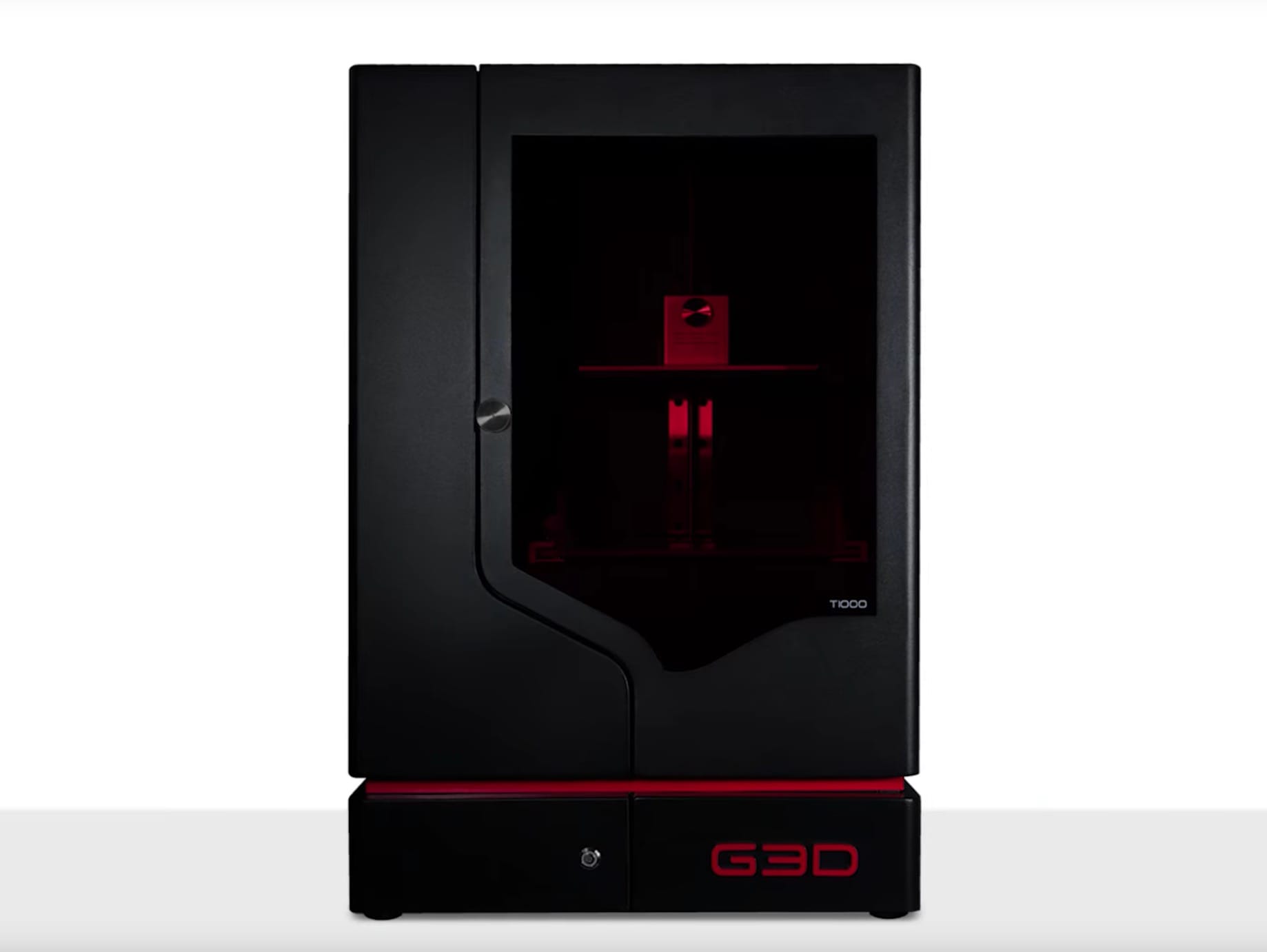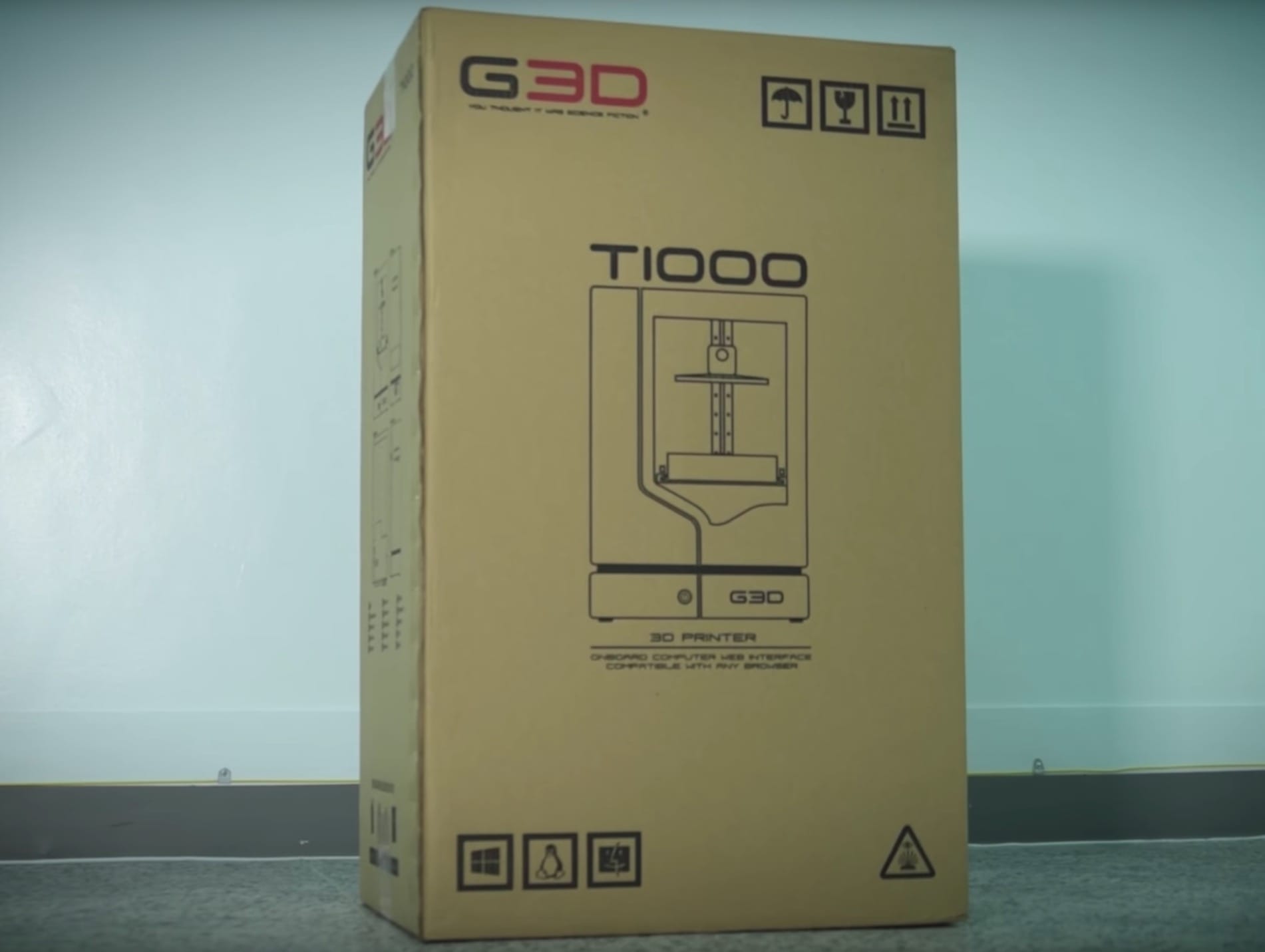
The market for SLA 3D printers is quite challenging these days.
Years ago you could construct a simple laser-resin 3D printer and make a good business, but entering the market today is very tough, with several highly refined products sold by well-run companies.
As a result I’ve seen multiple basic SLA-style desktop 3D printer launch campaigns fail miserably in recent months. But there is one new product that might be able to break that barrier: the T-1000 from G3D.
The competitive market for desktop SLA 3D printers seems to have taken two angles: technical superiority and ease of use. G3D has taken the former strategy for their T-1000 unit.
What technical advantages does the T-1000 carry? It has a rather large build volume for a resin 3D printer, of 179.2 x 134.4 x 300mm, which is quite tall.
They also claim a build speed of 66mm per hour, which is quite fast, although not as fast as some of the more exotic SLA systems that employ unusual layering methods. However, this is a low cost machine, so those approaches are not really feasible.
Another technical advantage they propose is a minimum layer size of only 0.0075mm (7.5 microns), which is not nearly the smallest we’ve seen on 3D printers (the OWL Nano 3D was able to hit 0.1 microns in 2014). But 7.5 microns is certainly exceptionally good resolution, but I wonder whether that increased resolution is worthwhile given the additional print time required. But it is an option for those using the T-1000.
The T-1000 includes a self-leveling system for their resin tank. As you can guess, a tippy resin tank is not a good idea for 3D printing and all resin machines include some method of leveling. But the T-1000 has an automatic system. It’s not clear how this works, but it could be a side effect of their layer management system, in which the entire tank tips to release the layer.
Most inexpensive resin-based 3D printers make use of off-the-shelf DLP projectors (unless they use lasers), and pricing for such machines is often quoted without the projector, as if operators have an appropriate projector handy. Some may do so, but many will not. In the case of the T-1000, the machine not only includes the projector, but a custom-made projector at that.
The other advantage held by the T-1000 is pricing. They like to compare themselves to the major SLA desktop machines such as those from Formlabs, B9 and even 3D Systems. Against those machines, their price is certainly very low at only USD$1,900.
Note: There is a way to instantly obtain a USD$100 discount by using their not-so-secret “easter egg” on their website:

Another “feature” you might consider is that they provide some evidence that the machine is ready to ship, as their video shows the machine packed up and ready to go, as well as pallets of T-1000’s heading out the door. Those could be made-up shots, but at least that’s more than most launch campaigns offer.

But my concern is not among their technical achievements, but rather about ease of use, the other aspect of competition. In my estimation, 3D printers tend to be used more if they are easy to operate and are extremely reliable. Having spent some time with the Formlabs Form 2 recently, I can say that Formlabs has provided an extraordinarily simple operational process and printing appears completely reliable.
For a new machine like the T-1000 we won’t know reliability statistics until a large group of operators gets their hands on them. It may be that the machine is just as usable as others, but it’s not yet certain. That’s one of the risks you take on when backing a new machine.

